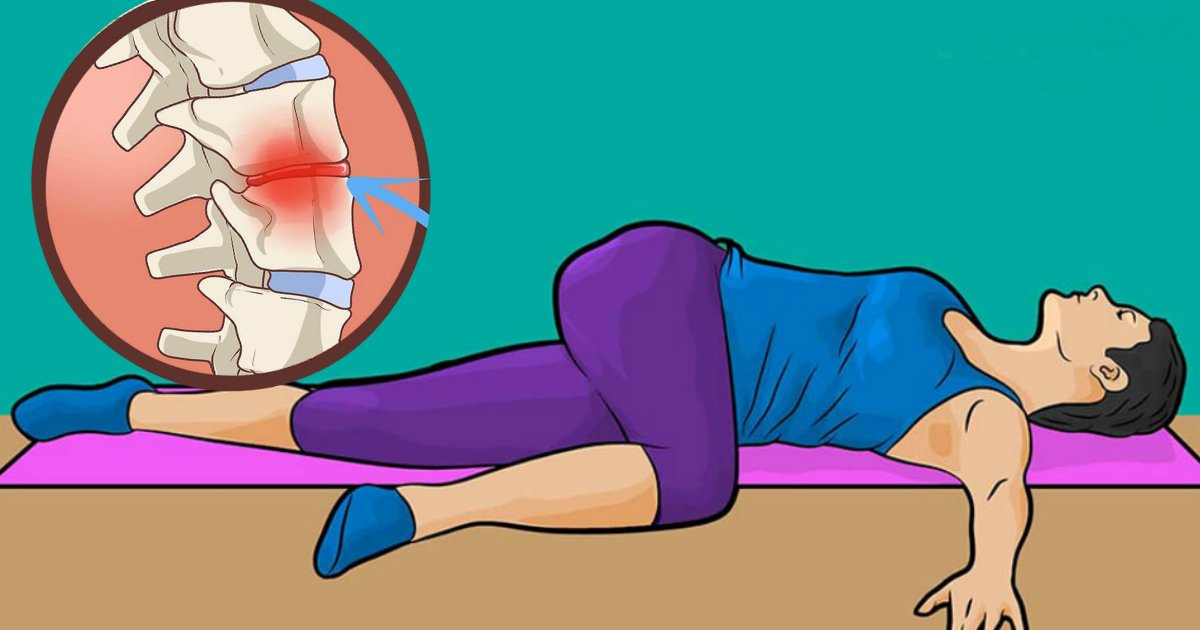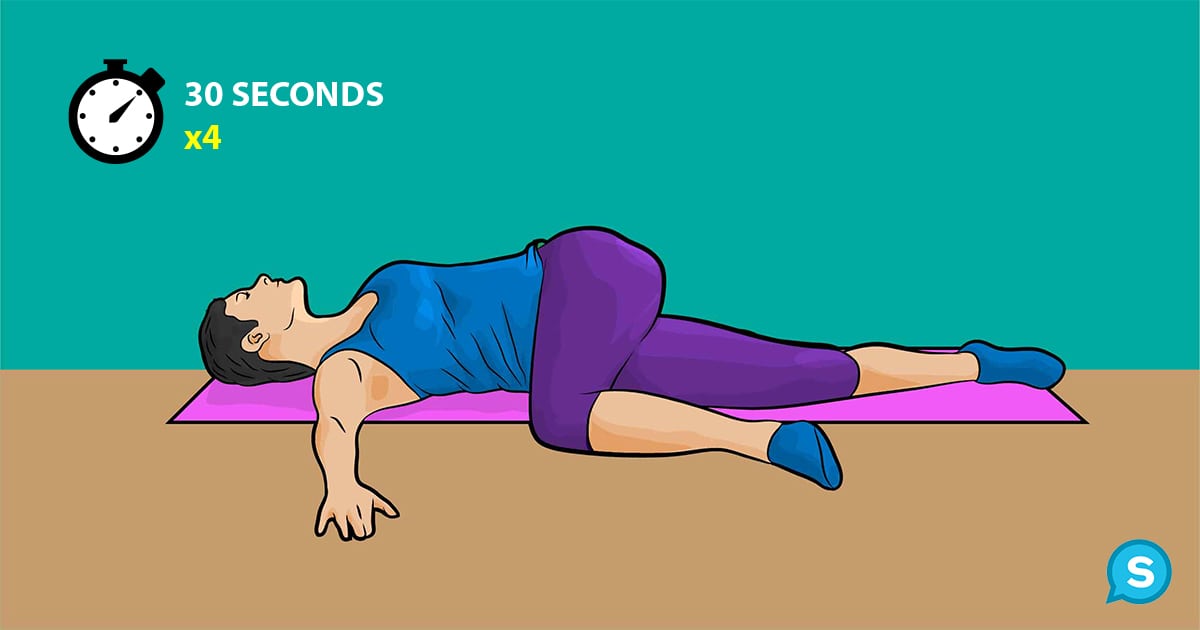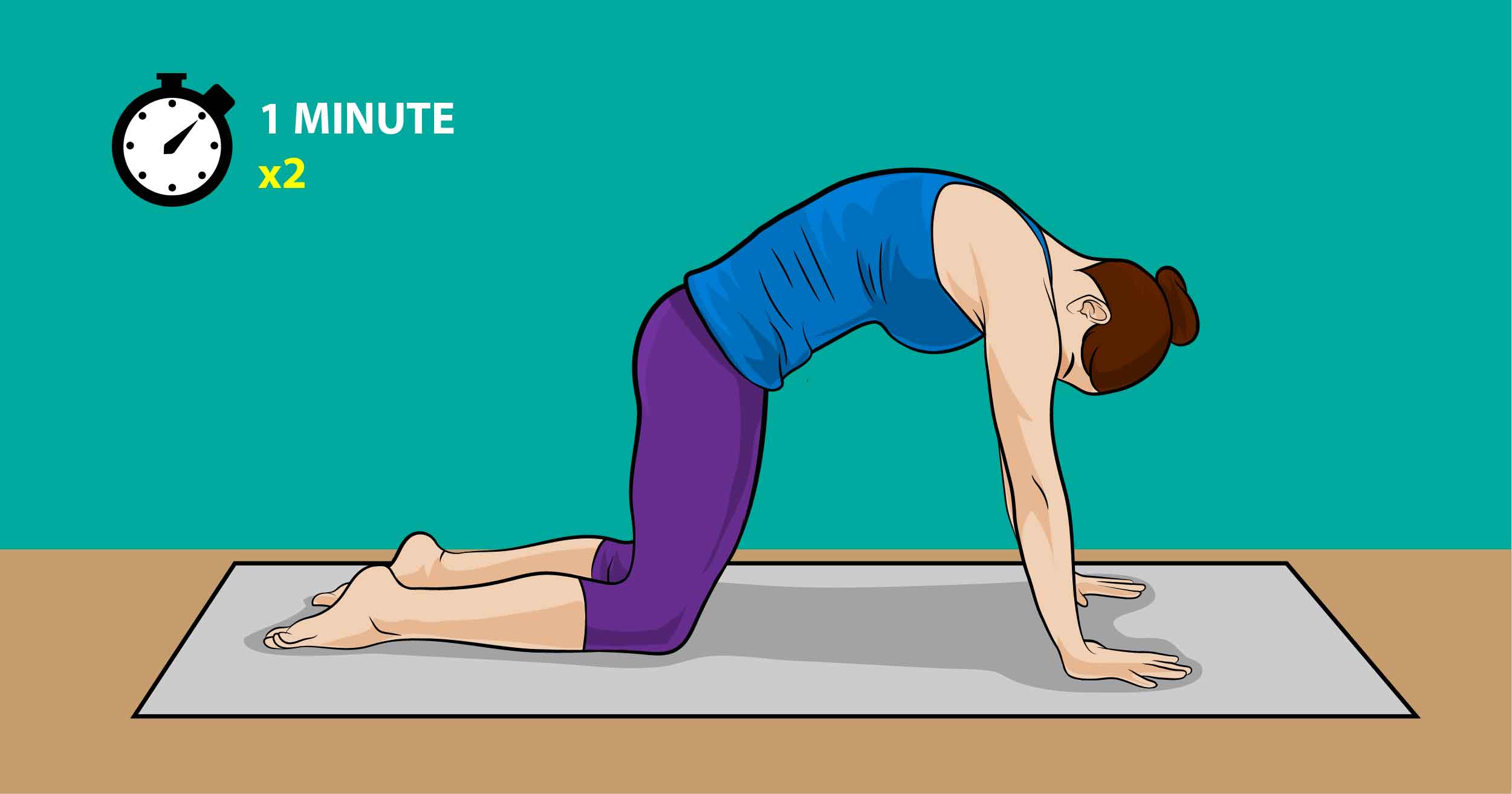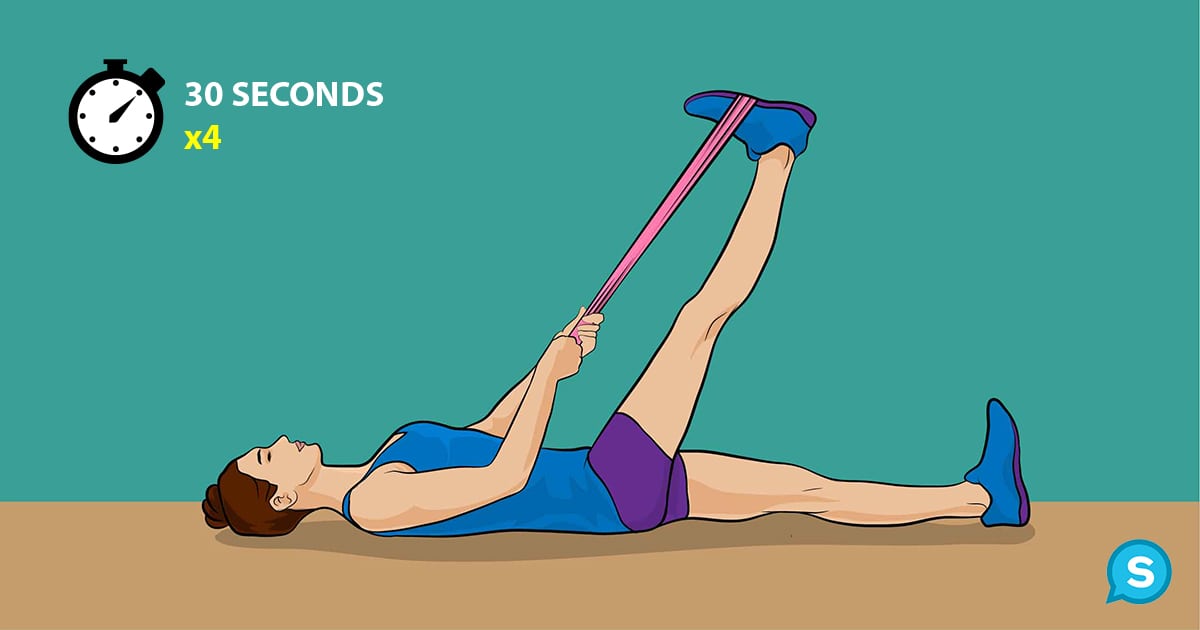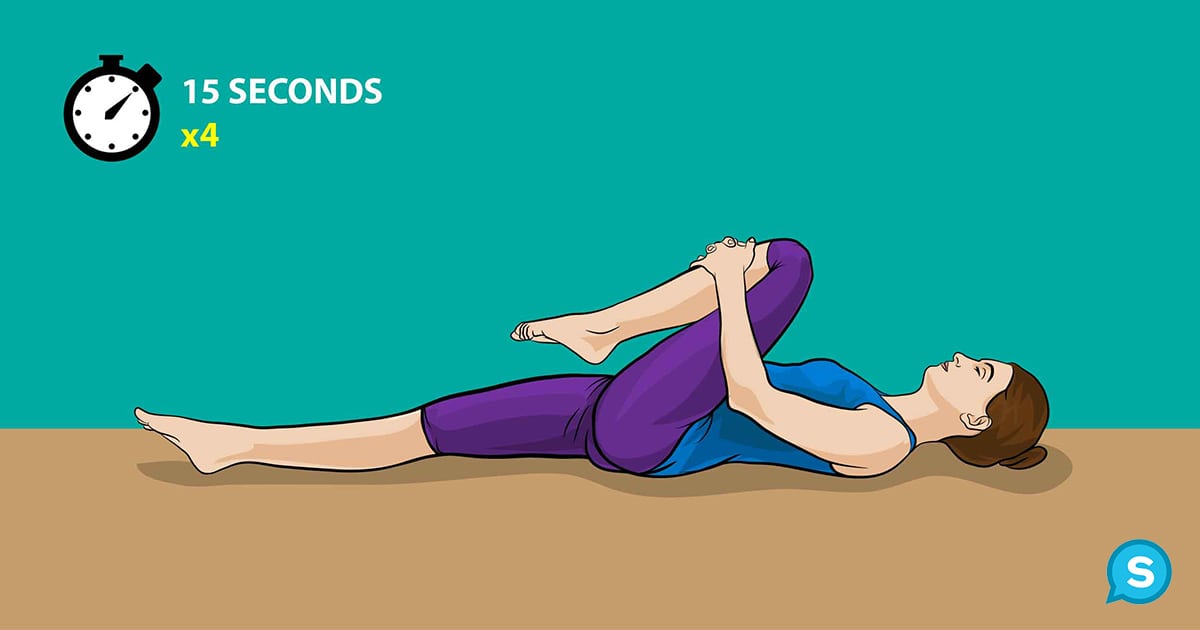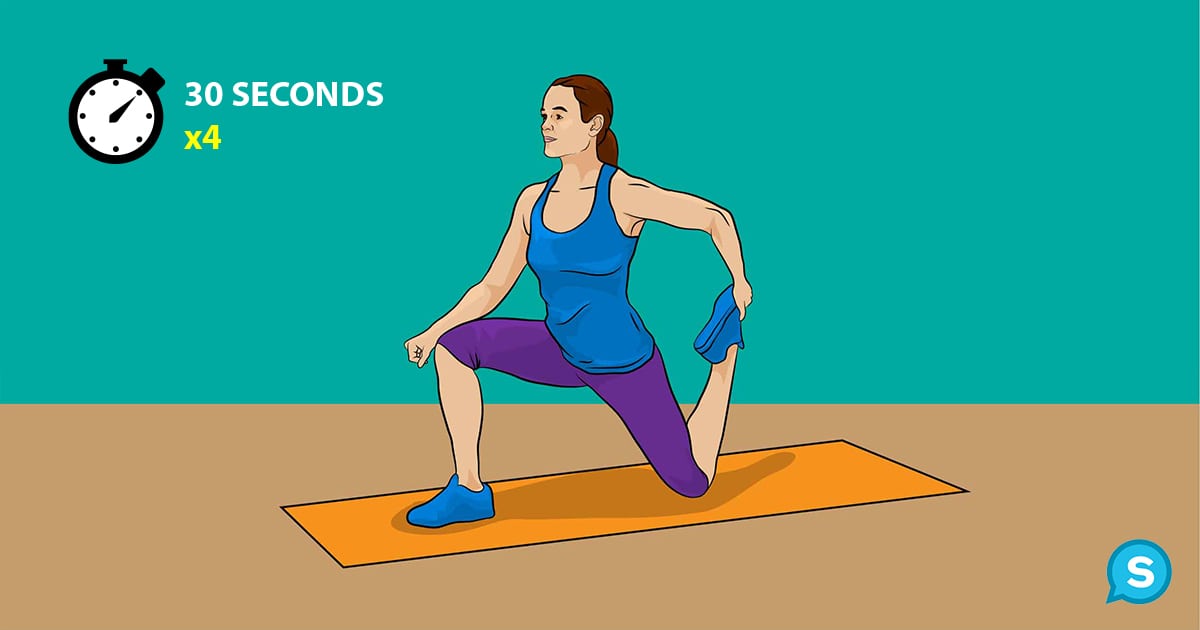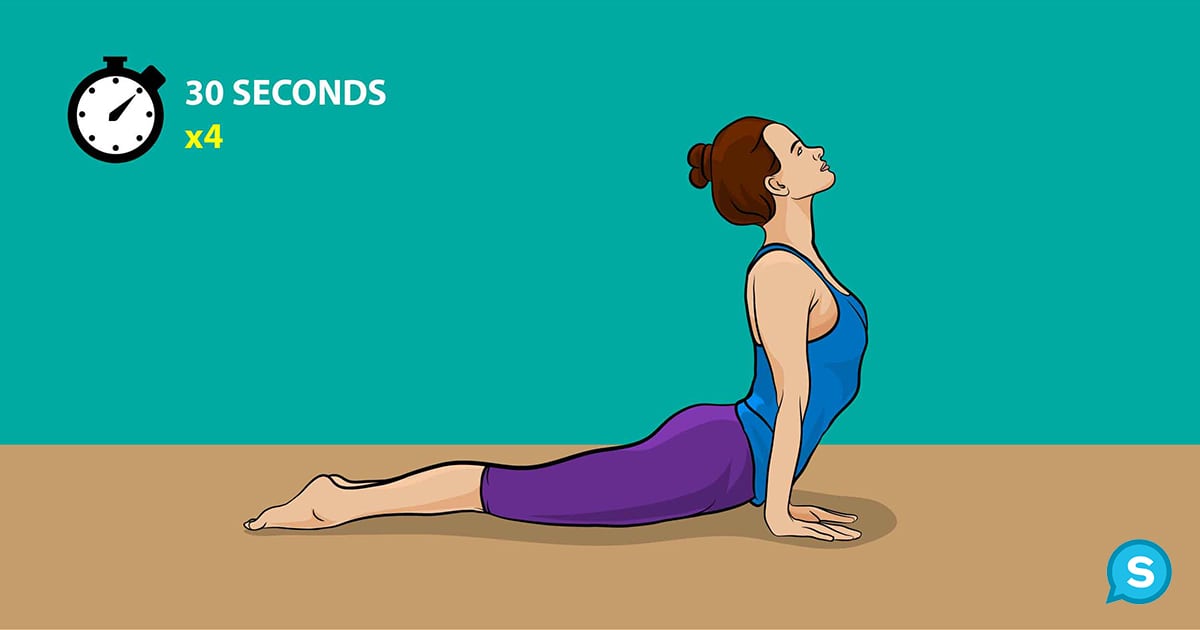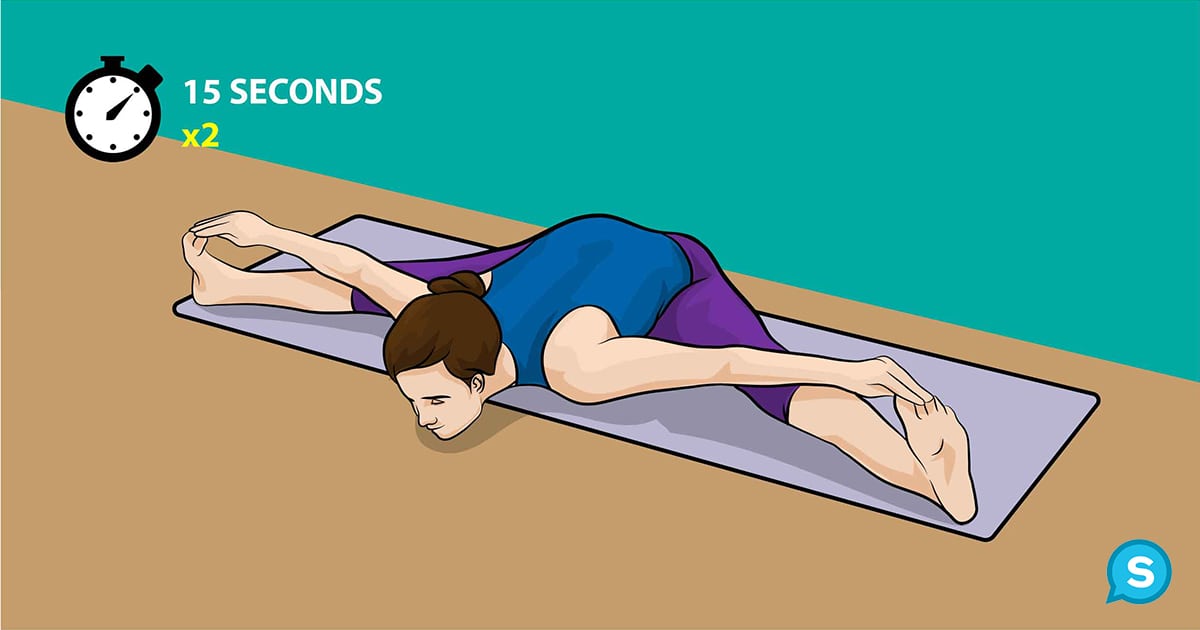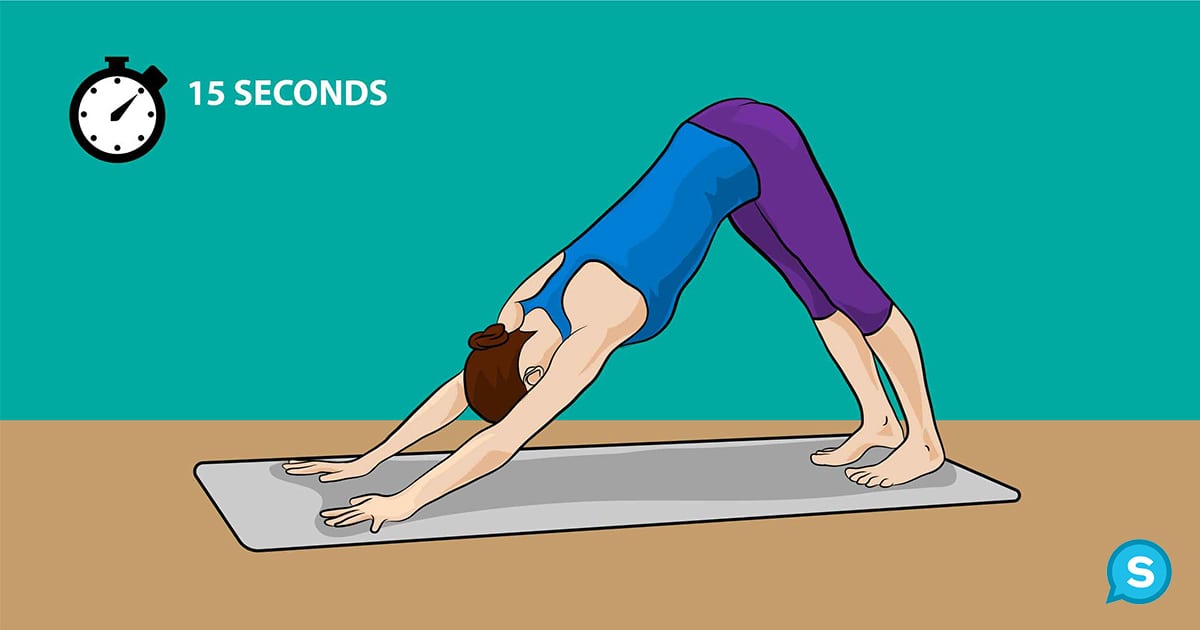A backache is a serious issue for many and not only can it be extremely annoying, but it’s quite hard to get rid of if the pain is chronic. A good solution is exercising more, but it’s important to choose and pick the right movements to make sure you don’t overload your back and the rest of your body. A number of stretches work particularly well when you’re trying to relieve back pain, and you can combine them all in a short daily routine that shouldn’t take you longer than twenty minutes.
Before you go ahead and start with these stretches and short exercises, it’s important that you’ve already warmed up your body just a little bit to feel the effects. We also recommend that you use a fitness mat, as some of these won’t feel particularly comfortable on a naked floor.
1) Lying spinal twist
The first exercise is fairly simple and requires you to lie on your back. Stretch your arms completely to the sides and create a 90° angle. Next, you’re going to want to lift your right leg up, and you’re going to use your left hand to try and pull the right leg over the left leg as far as possible. It sounds way more complicated than it actually is, and you just need to hold this position for half a minute. It’s important that you slightly turn your head to the opposite side as well.
Next, return to the starting position and do the same thing for your other leg. Then, repeat the exercise once more.
2) Cat-cow pose
In the cat-cow pose, you’ll have to be positioned on your hands and your knees, with your wrists being directly underneath the shoulders. Leave about a hip distance apart from your knees and shoulders and you’ll be mastering this pose in no time.
Next, breathe in, arch your back and lift your head up. The fun part is when you exhale, as you’ll have to push your back upwards and try to make a curve. Try to look directly at your belly with your head. Do this for about a minute, take a quick 20-second break and then do the cat-cow exercise again.
3) Hamstring stretches
Hamstring stretches are particularly handy for easing back pain, as it not only strengthens but also lengthens the muscles in your thighs. This will help take some stress off your back and eases the pain.
The exercise itself is quite simple. Just lie on your back and bend one leg. Next, you want to pull the completely straight leg up towards the head with a piece of stretching rope. If you don’t have stretching rope available, your hands will do the trick just fine as well. Pull as far as you possibly can until it starts hurting.
Keep this position for half a minute, and do it with the other leg as well. Repeat the entire process once again and this part of the routine is finished.
4) Knees to chest
One of the most simple stretches on the list, but perhaps also one of the most effective. It increases the flexibility and motion of your joints and stretches the lower back as well.
Simply lie on your back, lift your left leg and pull towards you as far as you can using both of your hands. Hold your knee there for a good fifteen seconds, and then do it again with your right leg. As with most other exercises, repeat it two times.
5) Psoas exercise
If you’ve never heard of the psoas muscle before – don’t worry, it’s not exactly a well-known part of the body. However, it is quite important as it’s positioned directly underneath the hips, and can stabilize the spine and prevent lower back pains.
Simply stand straight and put your right leg forward, with your other leg backward. Make sure that you keep a straight posture and bend your right knee. Keep your body in this position for a couple of seconds and lower your left knee just enough to touch the floor.
Next, you want to move the rest of your body forward, while staying straight. Pull your left heel with your left hand and hold for half a minute. Switch it up with the other leg and repeat two times.
6) Cobra yoga pose
The cobra pose is often used in many yoga routines and is great for making your shoulder muscles stronger, and adding a bit of flexibility and rigidity to the spine.
Lie on your belly and place your hands face down by your chest. Lift the top of your body and create an arch. Don’t try to create the biggest arch possible, it’s important that this exercise doesn’t hurt. Keep yourself in this position for thirty seconds and make sure you do this four times in total.
7) Child’s pose
Speaking of yoga, the child’s pose is another great exercise that you can implement in a daily routine to relieve some of the stress on your back. Get on all fours, and make sure your knees are underneath the hips. With both arms, you want to reach out in front of you with the hand palms flat on the floor.
Next, you want to move the hips toward the heels, and you have to drop your forehead to the mat in the process while extending your arms further and further. Hold this position for up to half a minute, repeating it isn’t necessary.
8) Seated forward bend
The seated forward bend is an excellent stretch for the lumbar muscles and doing these on a regular basis will definitely help you relieve some back pain.
Make sure you’re seated and split your legs wide as far as you can. When you breathe in, raise both of your arms above the shoulders. During the exhalation, you’ll want to slide the left arm towards the inside of the left leg. The objective here is to be able to touch the toes, but don’t worry if you can’t reach them just yet. Hold for fifteen seconds and return to the starting pose.
Repeat this again for the right side. Because this lumbar exercise is fairly intensive, doing this once per routine is sufficient.
9) Downward pyramid pose
This pyramid pose, sometimes also referred to as the dog pose, is great for the shoulders, calves, hands, and hamstrings – which greatly benefit the spine as well. In other words, one pose to exercise them all!
Get down on your hands and your knees and keep your wrists at about a hip-distance apart from each other. Lift the hips above in order to make a downward pyramid, and it’s important to pay attention to your breathing as well. Hold this triangle position for about fifteen seconds and slowly revert back to the starting position. You only have to do this once per routine.


